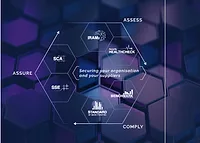MIT launches SCRAM, a tool to help enterprise security prioritize investments

The Secure Cyber Risk Aggregation and Measurement (SCRAM), a new platform from the Massachusetts Institute of Technology (MIT) Computer Science and Artificial Intelligence Laboratory (CSAIL), quantifies companies' security risk without requiring them to disclose sensitive data about their systems to the research team, much less their competitors.
Developed by Reynolds alongside economist Andrew Lo and cryptographer Vinod Vaikuntanathan, the platform helps companies do multiple things:
- quantify how secure they are;
- understand how their security compares to peers; and
- evaluate whether they’re spending the right amount of money on security, and if and how they should change their particular security priorities.
The team received internal data from seven large companies that averaged 50,000 employees and annual revenues of $24 billion. By securely aggregating 50 different security incidents that took place at the companies, the researchers were able to analyze which specific steps were not taken that could have prevented them. (Their analysis used a well-established set of nearly 200 security actions referred to as the Center for Internet Security Sub-Controls.)
“We were able to paint a really thorough picture in terms of which security failures were costing companies the most money,” says Reynolds, who co-authored a related paper with professors Lo and Vaikuntanathan, MIT graduate student Leo de Castro, Principal Research Scientist Daniel J. Weitzner, PhD student Fransisca Susan, and graduate student Nicolas Zhang. “If you’re a chief information security officer at one of these organizations, it can be an overwhelming task to try to defend absolutely everything. They need to know where they should direct their attention.”
Among other findings, the team determined that the three following security vulnerabilities had the largest total losses, each in excess of $1 million:
- Failures in preventing malware attacks
- Communication over unauthorized ports
- Failures in log management for security incidents
As a next step, the researchers plan to expand the pool of participating companies, with representation from a range of different sectors that include electricity, finance, and biotech. Reynolds says that if the team can gather data from upwards of 70 or 80 companies, they’ll be able to do something unprecedented: put an actual dollar figure on the risk of particular defenses failing.
Looking for a reprint of this article?
From high-res PDFs to custom plaques, order your copy today!







